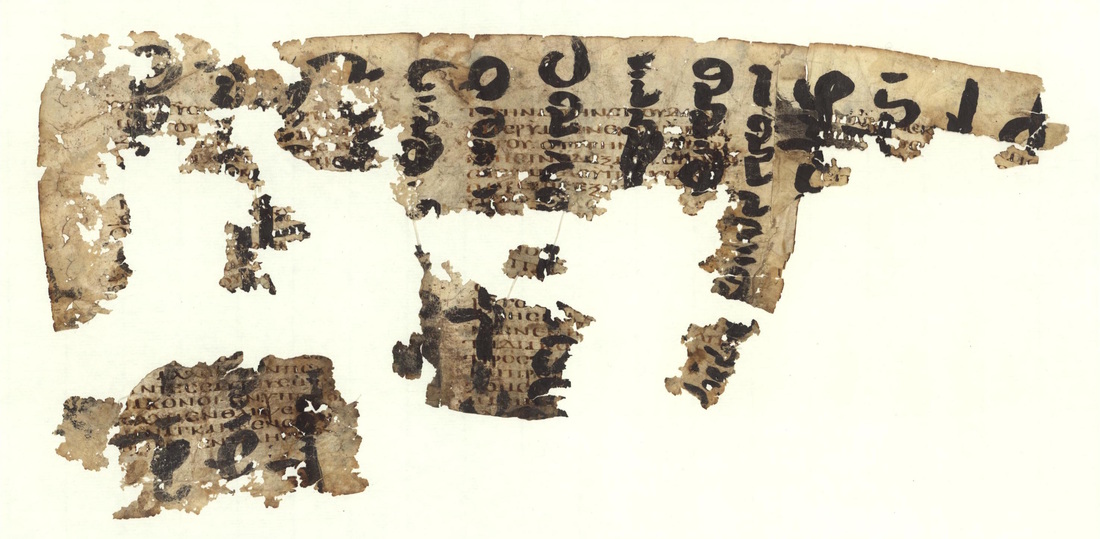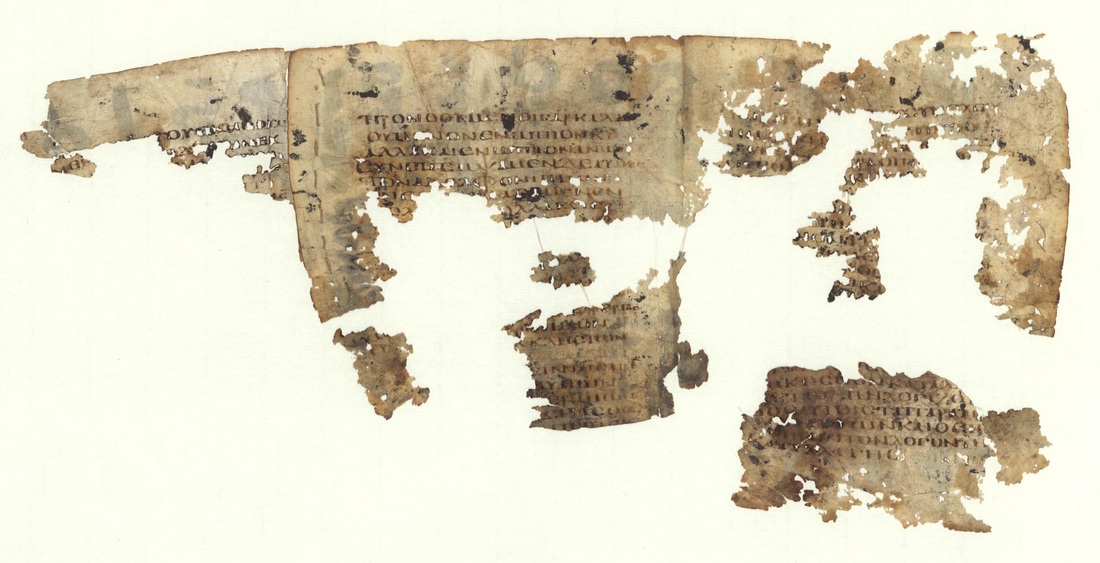
The lower, Greek text is generally dated to the mid-sixth century on the grounds of palaeography. In addition, the Persian occupation of Egypt (615-618 C.E.) provides a terminus ante quem (latest possible date) for the Greek text. The Pahlavi text belongs to an important group of Pahlavi documents written exclusively in Egypt during the reign of Persian ruler Khosrow II, the last great king of the Sasanian Empire. On this group of Pahlavi documents, see here. The secure dating of these two separate texts allows us to see that the biblical codex did not have a very long life. If the biblical codex was composed some time in the mid-sixth century and the Pahlavi text sometime around 620, then this once-beautiful codex lived for approximately 70 years. But this raises an interesting historical question: is the demise of this codex connected in some way to Persia's occupation of Egypt? If so, how? The wife of Khosrow II was a Christian, and the Christian religion was tolerated under his reign, so I doubt there were any Bible-burnings going on. Nonetheless, we can only wonder how the biblical codex came into the hands of this particular Persian scribe.



